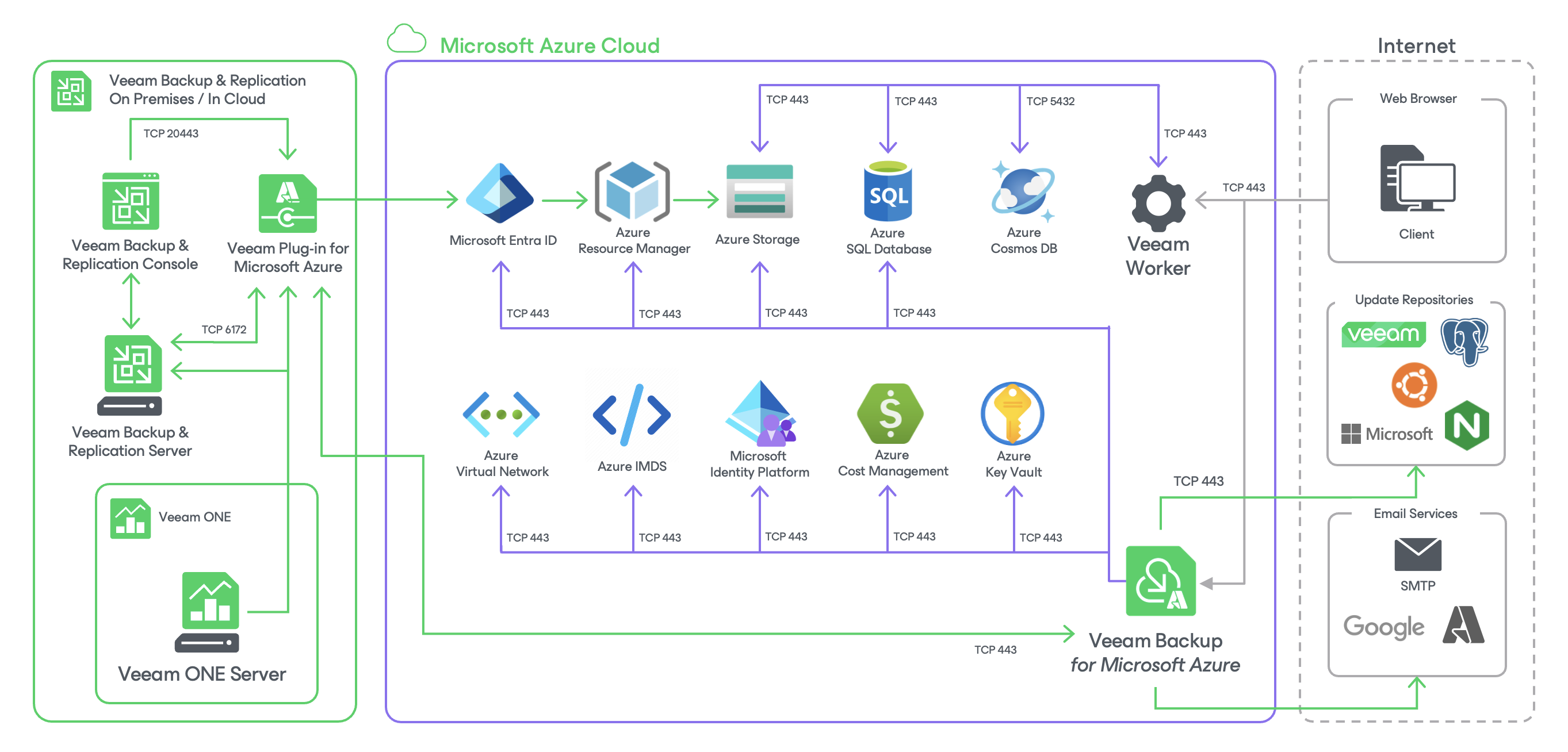Azure Services
To perform backup and restore operations in both public and private environments, Veeam Plug-in for Microsoft Azure, backup appliance and worker instances must have outbound network access to the following Microsoft Azure services.
Azure Services Required for Veeam Plug-in for Microsoft Azure
Azure Services Required for Backup Appliance
- Microsoft Entra ID
- Azure Cost Management
- Azure Instance Metadata Service
- Azure Key Vault
- Azure Queue Storage
- Azure Resource Manager
- Azure Storage
- Azure Virtual Network, for Azure resources that operate in private environments only
- Microsoft Identity Platform
Azure Services Required for Worker Instances
Important |
Consider the following:
|
